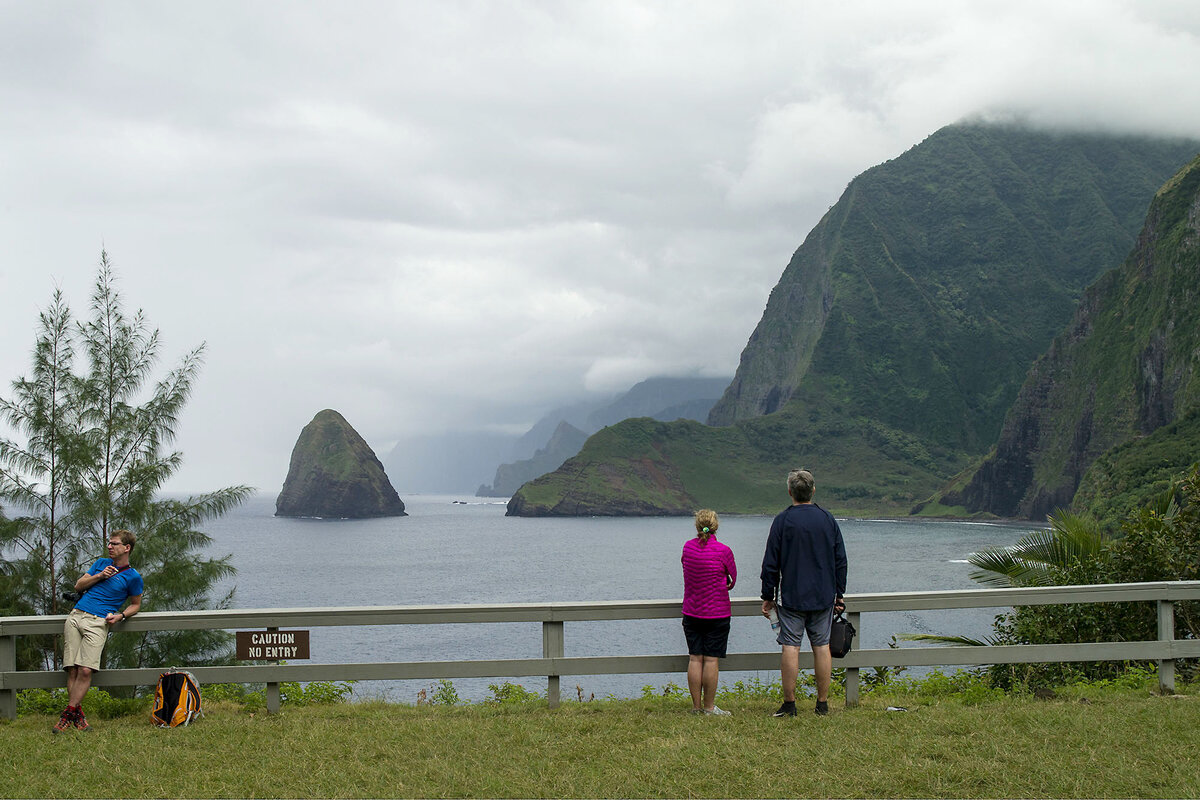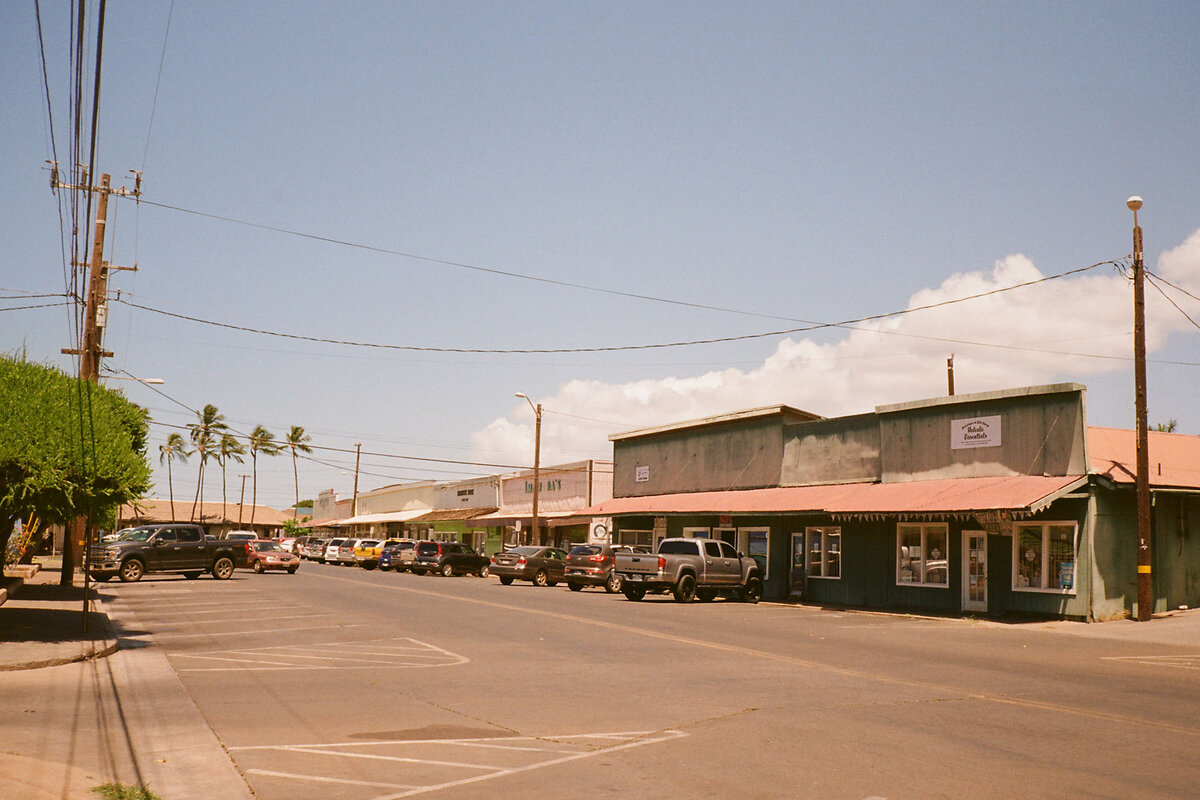A year after Hawaii’s Maui fires, a question of identity
Loading...
| Molokai, Hawaii
In Hawaii, everyone knows where they were on Aug. 8, 2023, when fires raced down the hills and devoured Lahaina town on Maui.
At least 100 people were killed and 12,000 displaced in the deadliest U.S. fire in over a century. The past year has been hard, and events this week honor those who died as well as the community’s remarkable resilience. Along with commemoration, a question of identity has emerged: What should the future of Lahaina look like?
Why We Wrote This
A year after fires incinerated the Hawaii town of Lahaina on Maui, survivors are honoring those who died – and the town’s resilience. Many are also looking to dial down tourism. Is the island of Molokai a model?
An answer might come from a surprising place – the neighboring island of Molokai.
Across the Pailolo Channel, the mountains of Molokai are visible from Lahaina. After all, it’s only a 30-minute boat ride away. The cousin islands share history, families, and culture. Yet Maui is built largely on tourism, while Molokai is mostly agrarian, with far fewer people. On this, the least developed of the Hawaiian Islands, you can still identify everyone by the car they drive.
“We’ve always marched to our own drum,” explains Malia Akutagawa, who is from Molokai and is an associate professor of law and Hawaiian studies at the University of Hawaii. “We never prioritized tourism. People thought we were backwards, but we just wanted something different.”
In Hawaii, everyone knows where they were on Aug. 8, 2023, when fires raced down the hills and devoured Lahaina town on Maui.
At least 100 people were killed and 12,000 displaced in the deadliest U.S. fire in over a century. The past year has been hard, and events this week honor those who died as well as the community’s remarkable resilience, symbolized in the green leaves of the town’s scorched historic banyan tree.
Along with commemoration, a question of Lahaina’s identity has emerged: What should be the future of this picturesque harbor town, which has seen its own transformation from capital of the Hawaiian Kingdom, to whaling mecca, to plantation lands, and finally to tourist center and economic driver of Maui?
Why We Wrote This
A year after fires incinerated the Hawaii town of Lahaina on Maui, survivors are honoring those who died – and the town’s resilience. Many are also looking to dial down tourism. Is the island of Molokai a model?
An answer might come from a surprising place – the neighboring island of Molokai.
Across the Pailolo Channel, the mountains of Molokai are visible from Lahaina. After all, it’s only a 30-minute boat ride away. The cousin islands share history, families, and culture. Yet Maui is built largely on tourism, while Molokai is mostly agrarian, with far fewer people. On this, the least developed of the Hawaiian Islands, you can still identify everyone by the car they drive. There are no high-rise buildings, no freeways, no traffic lights.
Now, the shock of devastation on Maui has caused many residents to rigorously investigate questions about tourism, economics, and identity that have been tested on Molokai for years.
The difference in tourism between these two islands is enormous. In June, 216,065 visitors came to Maui, while a mere 2,478 visited Molokai, according to Hawaii’s Department of Business, Economic Development & Tourism. Cattle ranching and pineapple cultivation were long-time businesses on Molokai, with small-scale farming becoming increasingly prevalent today. Many Molokai residents follow Indigenous subsistence practices – hunting, fishing, gathering – which supply about a third of the food.
It’s a lifestyle closely tied to land and ocean. Nearly half the population lives below the federal poverty line.
“We’ve always marched to our own drum,” explained Malia Akutagawa, who is from Molokai and is an associate professor of law and Hawaiian studies at the University of Hawaii, in an interview last year. “We never prioritized tourism. People thought we were backwards, but we just wanted something different.”
Molokai has the highest percentage of residents of Native Hawaiian ancestry in the state – more than 60%. Over the decades, this population has vigorously resisted the development of tourism on the island, thwarting the expansion efforts of Molokai Ranch, once the island’s largest employer. In 2008, the resort, owned by a Hong Kong investment group, shuttered its hotels, restaurants, movie theater, and golf course.
“Molokai has humbly been a showcase for what it means to be a Hawaiian community attempting to be healthy,” explains Todd Yamashita. Mr. Yamashita, who was born and raised on Molokai, is the co-owner of the local solar energy company Sun Farmers, as well as the former president of Hoahu Energy Cooperative Molokai.
Mr. Yamashita calls this a time of “huge transition” for Hawaii as a whole, where living by the values of sustainability and self-reliance could take precedence over tourism. His solar company primarily services Native Hawaiian families who have not had access to reliable electricity.
“I have no other choice but to live by my values,” he says. “I would put my life on the line for this island.”
Now, it seems as if Lahaina is interested in following that example by dialing down tourism.
This summer, a proposal to eliminate more than 7,000 short-term rentals on Maui was passed by the Maui and Molokai planning commissions. The proposal aims to free up rentals that serve predominantly tourists so that the housing can become available for residents.
“We simply cannot continue to prioritize offshore investments over the needs of our people,” said Richard Bissen, mayor of the County of Maui, which includes Molokai, at the commission hearing July 10.
Following the August fires, housing costs on Maui hiked to extraordinary levels. Single bedroom apartments went from $1,800 to $2,500, as an already limited housing stock became nearly impossible to find postfire. Meanwhile, thousands were still living in Federal Emergency Management Agency-funded rooms at the Kaanapali beach resorts.
“It’s a slow-moving disaster,” says Autumn Ness, executive director of the newly founded nonprofit Lahaina Community Land Trust, which seeks to “keep Lahaina lands in Lahaina hands.” She points to disturbing trends before the fire – overtourism, real estate wealth, and the trend toward short-term rentals – as overrunning residents.
The trust is working to help displaced Lahaina residents “stay home,” Ms. Ness explains, by offering them financial help to rebuild their properties, or by buying the property directly.
“We keep that land in Lahaina hands forever,” she says. “We’re almost leveraging our fire relief effort to correct a problem that was prefire, which is the displacement of Lahaina residents by economic forces.”
The Lahaina trust has been working with Molokai Heritage Trust, which is currently trying to acquire Molokai Ranch – one of the largest landowners in the state. “We’re not reinventing the wheel,” says Ms. Ness. “We’re learning from them.”
While organizations push for a new tourism balance on Maui, local businesses that rely on tourism are being forced to navigate a changing scene. Tourism still hasn’t recovered. The most recent state data shows that overall visitor spending on Maui dropped 27% in May compared with the same time last year. The number of visitors also declined – by 25%.
David Jung, owner of the Lahaina Cruise Company, is still unable to operate his business out of Lahaina harbor, and has had to let go 30 employees. Mr. Jung lost his home and close friends in the Aug. 8 fire. Now, he’s living on Oahu, waiting to restart on Maui.
This month, the state government, County of Maui, Hawaiian Electric, and other defendants agreed to a $4 billion settlement for victims of the fires. It addresses hundreds of lawsuits filed by individuals, businesses, and insurance companies.
“The tourists didn’t start the fire,” says Mr. Jung, arguing that the tourism industry is being unfairly blamed. It’s government officials who have the express responsibility of protecting the people, he says. “We should blame ourselves” for electing them.
Mr. Jung cautions against listening to just the loudest voices who are calling for less tourism.
The adjustment to a culture that’s less dependent on tourism can be tough financially, as residents of Molokai can attest. Clare and Gordon Albino have run Molokai Outdoors for 25 years, seeing firsthand the decline of tourism. It’s been a tough year for them fiscally, and they’ve shrunk their payroll from 10 employees down to one.
But the feast or famine business model is just a reality on Molokai. “If we make it to November, we could be hiring,” says Ms. Albino.
Ultimately, the couple view their work as more than a job in the tourism industry.
“We’re here to educate the visitors on what Molokai is all about,” says Ms. Albino. “It’s really important to find that balance.”










